Map Optimization Fuzzy Logic Framework in Wind Turbine Site Selection with Application to the USA Wind Farms
Abstract
:1. Introduction
2. Methodologies
2.1. Correlation-Based Distance
2.2. Map Optimization Fuzzy Logic Framework
3. Results and Discussion
3.1. Database Development
3.1.1. Observational Datasets
3.1.2. Forecasted Datasets
3.1.3. Map Optimization Datasets
3.2. Correlation-Based Distance
3.3. Available and Ideal Power Capacity
3.4. Wind Seasonality
3.5. Map Optimization
4. Conclusions
Author Contributions
Funding
Institutional Review Board Statement
Informed Consent Statement
Data Availability Statement
Acknowledgments
Conflicts of Interest
References
- Schaeffer, R.; Szklo, A.S.; de Lucena, A.F.P.; Borba, B.S.M.C.; Nogueira, L.P.P.; Fleming, F.P.; Troccoli, A.; Harrison, M.; Boulahya, M.S. Energy sector vulnerability to climate change: A review. Energy 2012, 38, 1–12. [Google Scholar] [CrossRef]
- Prema, V.; Rao, K.U. Time series decomposition model for accurate wind speed forecast. Renew. Wind Water Sol. 2015, 2, 18. [Google Scholar] [CrossRef] [Green Version]
- Gadalla, M.A.; Olujic, Z.; Jansens, P.J.; Jobson, M.; Smith, R. Reducing CO2 emissions and energy consumption of heat-integrated distillation systems. Environ. Sci. Technol. 2005, 39, 6860–6870. [Google Scholar] [CrossRef]
- Tourn, S.; Pallarès, J.; Cuesta, I.; Paulsen, U.S. Characterization of a new open jet wind tunnel to optimize and test vertical axis wind turbines. J. Renew. Sustain. Energy 2017, 9, 033302. [Google Scholar] [CrossRef] [Green Version]
- Abdelaziz, O.Y.; Hosny, W.M.; Gadalla, M.A.; Ashour, F.H.; Ashour, I.A.; Hulteberg, C.P. Novel process technologies for conversion of carbon dioxide from industrial flue gas streams into methanol. J. CO2 Util. 2017, 21, 52–63. [Google Scholar] [CrossRef]
- Pryor, S.C.; Barthelmie, R.J.; Young, D.T.; Takle, E.S.; Arritt, R.W.; Flory, D.; Gutowski, W.J.; Nunes, A.; Roads, J. Wind speed trends over the contiguous United States. J. Geophys. Res. 2009, 114, D14105. [Google Scholar] [CrossRef]
- Holt, E.; Wang, J. Trends in wind speed at wind turbine height of 80 m over the contiguous United States using the north American Regional Reanalysis (NARR). J. Appl. Meteorol. Climatol. 2012, 51, 2188–2202. [Google Scholar] [CrossRef] [Green Version]
- Hertwich, E.G.; Gibon, T.; Bouman, E.A.; Arvesen, A.; Suh, S.; Heath, G.A.; Bergesen, J.D.; Ramirez, A.; Vega, M.I.; Shi, L. Integrated life-cycle assessment of electricity-supply scenarios confirms global environmental benefit of low-carbon technologies. Proc. Natl. Acad. Sci. USA 2015, 112, 6277–6282. [Google Scholar] [CrossRef] [Green Version]
- Sanchez, V.; Pallares, J.; Vernet, A.; Agafonova, O.; Hämäläinen, J. A Multiple Actuator Block model for vertical axis wind turbines. Renew. Energy 2016, 99, 592–601. [Google Scholar] [CrossRef]
- Pryor, S.C.; Barthelmie, R.J. Assessing climate change impacts on the near-term stability of the wind energy resource over the United States. Proc. Natl. Acad. Sci. USA 2011, 108, 8167–8171. [Google Scholar] [CrossRef] [PubMed] [Green Version]
- Albadi, M.H.; El-Saadany, E.F. Overview of wind power intermittency impacts on power systems. Electr. Power Syst. Res. 2010, 80, 627–632. [Google Scholar] [CrossRef]
- Velandia-Cardenas, C.; Vidal, Y.; Pozo, F. Wind Turbine Fault Detection Using Highly Imbalanced Real SCADA Data. Energies 2021, 14, 1728. [Google Scholar] [CrossRef]
- Florescu, A.; Barabas, S.; Dobrescu, T. Research on Increasing the Performance of Wind Power Plants for Sustainable Development. Sustainability 2019, 11, 1266. [Google Scholar] [CrossRef] [Green Version]
- Tang, M.; Zhao, Q.; Ding, S.X.; Wu, H.; Li, L.; Long, W.; Huang, B. An Improved LightGBM Algorithm for Online Fault Detection of Wind Turbine Gearboxes. Energies 2020, 13, 807. [Google Scholar] [CrossRef] [Green Version]
- Ma, H.; Oxley, L.; Gibson, J.; Li, W. A survey of China’s renewable energy economy. Renew. Sustain. Energy Rev. 2010, 14, 438–445. [Google Scholar] [CrossRef]
- Pryor, S.C.; Barthelmie, R.J.; Clausen, N.E.; Drews, M.; MacKellar, N.; Kjellström, E. Analyses of possible changes in intense and extreme wind speeds over northern Europe under climate change scenarios. Clim. Dyn. 2012, 38, 189–208. [Google Scholar] [CrossRef]
- Türksoy, F. Investigation of wind power potential at Bozcaada, Turkey. Renew. Energy 1995, 6, 917–923. [Google Scholar] [CrossRef]
- Barthelmie, R.J.; Courtney, M.S.; Højstrup, J.; Larsen, S.E. Meteorological aspects of offshore wind energy: Observations from the Vindeby wind farm. J. Wind Eng. Ind. Aerodyn. 1996, 62, 191–211. [Google Scholar] [CrossRef]
- Xiao, Y.Q.; Li, Q.S.; Li, Z.N.; Chow, Y.W.; Li, G.Q. Probability distributions of extreme wind speed and its occurrence interval. Eng. Struct. 2006, 28, 1173–1181. [Google Scholar] [CrossRef]
- National Renewable Energy Laboratory. 20% Wind Energy by 2030: Increasing Wind Energy’s Contribution to US Electricity Supply; US Department of Energy: Washington, DC, USA, 2008; pp. 399–404.
- Kempton, W.; Pimenta, F.M.; Veron, D.E.; Colle, B.A. Electric power from offshore wind via synoptic-scale interconnection. Proc. Natl. Acad. Sci. USA 2010, 107, 7240–7245. [Google Scholar] [CrossRef] [Green Version]
- St. Martin, C.M.; Lundquist, J.K.; Handschy, M.A. Variability of interconnected wind plants: Correlation length and its dependence on variability time scale. Environ. Res. Lett. 2015, 10. [Google Scholar] [CrossRef]
- Katzenstein, W.; Fertig, E.; Apt, J. The variability of interconnected wind plants. Energy Policy 2010, 38, 4400–4410. [Google Scholar] [CrossRef]
- Kahn, E. The reliability of distributed wind generators. Electr. Power Syst. Res. 1979, 2, 1–14. [Google Scholar] [CrossRef]
- Oswald, J.; Raine, M.; Ashraf-Ball, H. Will British weather provide reliable electricity? Energy Policy 2008, 36, 3212–3225. [Google Scholar] [CrossRef]
- Sinden, G. Characteristics of the UK wind resource: Long-term patterns and relationship to electricity demand. Energy Policy 2007, 35, 112–127. [Google Scholar] [CrossRef]
- Hoen, B.D.; Diffendorfer, J.E.; Rand, J.T.; Kramer, L.A.; Garrity, C.P.; Hunt, H.E. United States Wind Turbine Database (ver. 3.1, July 2020): U.S. Geological Survey, American Wind Energy Association, and Lawrence Berkeley National Laboratory Data Release. 2020. Available online: https://www.sciencebase.gov/catalog/item/57bdfd8fe4b03fd6b7df5ff9 (accessed on 21 September 2021).
- Zergane, S.; Smaili, A.; Masson, C. Optimization of wind turbine placement in a wind farm using a new pseudo-random number generation method. Renew. Energy 2018, 125, 166–171. [Google Scholar] [CrossRef]
- Naderipour, A.; Abdul-Malek, Z.; Nowdeh, S.A.; Gandoman, F.H.; Moghaddam, M.J.H. A multi-objective optimization problem for optimal site selection of wind turbines for reduce losses and improve voltage profile of distribution grids. Energies 2019, 12, 2621. [Google Scholar] [CrossRef] [Green Version]
- Marmidis, G.; Lazarou, S.; Pyrgioti, E. Optimal placement of wind turbines in a wind park using Monte Carlo simulation. Renew. Energy 2008, 33, 1455–1460. [Google Scholar] [CrossRef]
- Noorollahi, Y.; Yousefi, H.; Mohammadi, M. Multi-criteria decision support system for wind farm site selection using GIS. Sustain. Energy Technol. Assess. 2016, 13, 38–50. [Google Scholar] [CrossRef]
- Cassola, F.; Burlando, M.; Antonelli, M.; Ratto, C.F. Optimization of the Regional Spatial Distribution of Wind Power Plants to Minimize the Variability of Wind Energy Input into Power Supply Systems. J. Appl. Meteorol. Climatol. 2008, 47, 3099–3116. [Google Scholar] [CrossRef]
- Ituarte-Villarreal, C.M.; Espiritu, J.F. Optimization of wind turbine placement using a viral based optimization algorithm. Procedia Comput. Sci. 2011, 6, 469–474. [Google Scholar] [CrossRef] [Green Version]
- Malvaldi, A.; Weiss, S.; Infield, D.; Browell, J.; Leahy, P.; Foley, A.M. A spatial and temporal correlation analysis of aggregate wind power in an ideally interconnected Europe. Wind Energy 2017, 20, 1315–1329. [Google Scholar] [CrossRef] [Green Version]
- Cetinay, H.; Kuipers, F.A.; Guven, A.N. Optimal siting and sizing of wind farms. Renew. Energy 2017, 101, 51–58. [Google Scholar] [CrossRef] [Green Version]
- Van Haaren, R.; Fthenakis, V. GIS-based wind farm site selection using spatial multi-criteria analysis (SMCA): Evaluating the case for New York State. Renew. Sustain. Energy Rev. 2011, 15, 3332–3340. [Google Scholar] [CrossRef]
- Denholm, P.; Hand, M.; Jackson, M.; Ong, S. Land Use Requirements of Modern Wind Power Plants in the United States; National Renewable Energy Lab.: Golden, CO, USA, 2009. [Google Scholar] [CrossRef] [Green Version]
- Knopper, L.D.; Ollson, C.A.; McCallum, L.C.; Aslund, M.L.W.; Berger, R.G.; Souweine, K.; McDaniel, M. Wind turbines and human health. Front. Public Health 2014, 2, 1–30. [Google Scholar] [CrossRef] [Green Version]
- Saidur, R.; Rahim, N.A.; Islam, M.R.; Solangi, K.H. Environmental impact of wind energy. Renew. Sustain. Energy Rev. 2011, 15, 2423–2430. [Google Scholar] [CrossRef]
- Kwong, W.Y.; Zhang, P.Y.; Romero, D.; Moran, J.; Morgenroth, M.; Amon, C. Wind Farm Layout Optimization Considering Energy Generation and Noise Propagation. In Volume 3: 38th Design Automation Conference, Parts A and B; ASME: Chicago, IL, USA, 12–15 August 2012; p. 323. [Google Scholar]
- Katinas, V.; Marčiukaitis, M.; Tamašauskienė, M. Analysis of the wind turbine noise emissions and impact on the environment. Renew. Sustain. Energy Rev. 2016, 58, 825–831. [Google Scholar] [CrossRef]
- Yin Kwong, W.; Yun Zhang, P.; Romero, D.; Moran, J.; Morgenroth, M.; Amon, C. Multi-Objective Wind Farm Layout Optimization Considering Energy Generation and Noise Propagation With NSGA-II. J. Mech. Des. 2014, 136, 091010. [Google Scholar] [CrossRef]
- Stemler, J. Wind Power Siting, Incentives, and Wildlife Guidelines in the United States. 2007. Available online: https://www.fws.gov/habitatconservation/windpower/afwa%20wind%20power%20final%20report.pdf (accessed on 21 September 2021).
- Heibel, J.; Durkay, J. State Statutes on Wind Facility Siting. State Legislative Approaches to Wind Energy Facility Siting. 2016. Available online: https://www.ncsl.org/research/energy/state-wind-energy-siting.aspx#statutes.v (accessed on 21 September 2021).
- Shepherd, D.; Welch, D.; Hill, E.; McBride, D.; Dirks, K. Evaluating the impact of wind turbine noise on health-related quality of life. Noise Health 2011, 13, 333. [Google Scholar] [CrossRef]
- Davy, J.L.; Burgemeister, K.; Hillman, D. Wind turbine sound limits: Current status and recommendations based on mitigating noise annoyance. Appl. Acoust. 2018, 140, 288–295. [Google Scholar] [CrossRef]
- Land Management Bureau-U.S. Department of the Interior Competitive Processes, Terms, and Conditions for Leasing Public Lands for Solar and Wind Energy Development and Technical Changes and Corrections. Fed. Regist. 2016, 81 FR 9212, 92122–92230. [Google Scholar]
- Land Management Bureau-U.S. Department of the Interior Rights-of-way under the Federal Land Policy Management Act. 2018. Available online: https://www.blm.gov/sites/blm.gov/files/AboutUs_LawsandRegs_FLPMA.pdf (accessed on 21 September 2021).
- Dhunny, A.Z.; Doorga, J.R.S.; Allam, Z.; Lollchund, M.R.; Boojhawon, R. Identification of optimal wind, solar and hybrid wind-solar farming sites using fuzzy logic modelling. Energy 2019, 188, 116056. [Google Scholar] [CrossRef]
- Pearson, K. Notes on the History of Correlation. Biometrika 1920, 13, 25. [Google Scholar] [CrossRef]
- NOAA National Centers for Environmental Information: Global Surface Hourly, Integrated Surface Dataset. 2017. Available online: https://data.noaa.gov/dataset/dataset/integrated-surface-dataset-global (accessed on 21 September 2021).
- Novák, V.; Perfilieva, I.; Močkoř, J. Mathematical Principles of Fuzzy Logic; Springer: Boston, MA, USA, 1999; ISBN 978-1-4613-7377-3. [Google Scholar]
- Ling, W.-K. REVIEWS. In Nonlinear Digital Filters; Elsevier: Amsterdam, The Netherlands, 2007; pp. 8–31. [Google Scholar]
- Smith, A.; Lott, N.; Vose, R. The Integrated Surface Database: Recent Developments and Partnerships. NOAA’s National Climatic Data Center. Bull. Am. Meteorol. Soc. 2011, 92, 704–708. [Google Scholar] [CrossRef]
- Draxl, C.; Clifton, A.; Hodge, B.-M.; McCaa, J. The Wind Integration National Dataset (WIND) Toolkit. Appl. Energy 2015, 151, 355–366. [Google Scholar] [CrossRef] [Green Version]
- King, J.; Clifton, A.; Hodge, B.; King, J. Validation of Power Output for the WIND Toolkit; National Renewable Energy Lab.: Golden, CO, USA, 2014. [Google Scholar]
- Draxl, C.; Hodge, B.; Clifton, A. Overview and Meteorological Validation of the Wind Integration National Dataset Toolkit. National Renewable Energy Lab. 2015. Available online: https://www.nrel.gov/docs/fy15osti/61740.pdf (accessed on 21 September 2021).
- Draxl, C.; Clifton, A. A Guide to Using the WIND Toolkit Validation Code. National Renewable Energy Lab. 2014. Available online: https://www.nrel.gov/docs/fy15osti/62595.pdf (accessed on 21 September 2021).
- U.S. Geological Survey. 1/3rd arc-second Digital Elevation Models (DEMs)-USGS National Map 3DEP Downloadable Data Collection: U.S. Geological Survey. 2017. Available online: https://www.sciencebase.gov/catalog/item/4f70aa9fe4b058caae3f8de5 (accessed on 21 September 2021).
- Friedl, M.A.; Sulla-Menashe, D.; Tan, B.; Schneider, A.; Ramankutty, N.; Sibley, A.; Huang, X. MODIS Collection 5 global land cover: Algorithm refinements and characterization of new datasets. Remote Sens. Environ. 2010, 114, 168–182. [Google Scholar] [CrossRef]
- US Counties Land Price per Acre Map. Available online: https://decolonialatlas.files.wordpress.com/2017/12/us-counties-land-price-per-acre-map.jpg (accessed on 21 September 2021).
- Google. (n.d.-b). Wind Stations Locations. Retrieved from Google Maps. 2020. Available online: https://www.google.com/maps/@34.2297666,-118.6235017,125623m/data=!3m1!1e3 (accessed on 21 September 2021).
- Sedlacek, G.; Miehe, A.; Libreros, A.; Heider, Y. Geotechnical Stability of Gravity Base Foundations for Offshore Wind Turbines on Granular Soils. In Proceedings of the ASME 2012 31st international conference on ocean, offshore and Arctic engineering, American Society of Mechanical Engineers, Rio de Janeiro, Brazil, 1–6 July 2012; pp. 57–63. [Google Scholar]
- Dhople, S.V.; Dominguez-Garcia, A.D. A framework to determine the probability density function for the output power of wind farms. In Proceedings of the 2012 IEEE North American Power Symposium (NAPS), Champaign, IL, USA, 9–11 September 2012; pp. 1–6. [Google Scholar]
- Curve Fitting Toolbox: For Use with MATLAB®; User’s Guide: Natick, MA, USA, 2017.
- Lynch, K.; Murphy, J.; Serri, L.; Airoldi, D. Site Selection Methodology for Combined Wind and Ocean Energy Technologies In Europe. In Proceedings of the 4th International Conference of Ocean Energy, Dublin, Ireland, 17–19 October 2012. [Google Scholar]
- Cradden, L.; Kalogeri, C.; Barrios, I.M.; Galanis, G.; Ingram, D.; Kallos, G. Multi-criteria site selection for offshore renewable energy platforms. Renew. Energy 2016, 87, 791–806. [Google Scholar] [CrossRef] [Green Version]
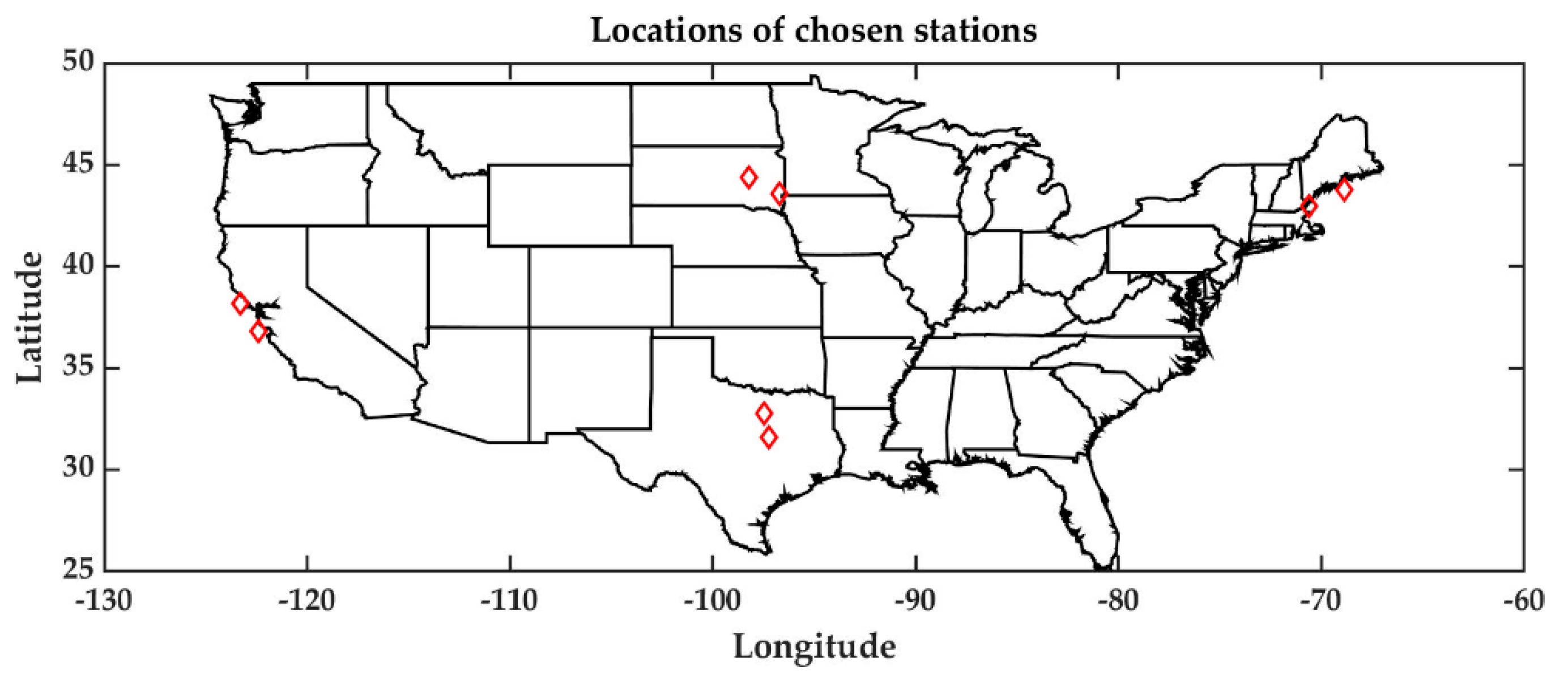
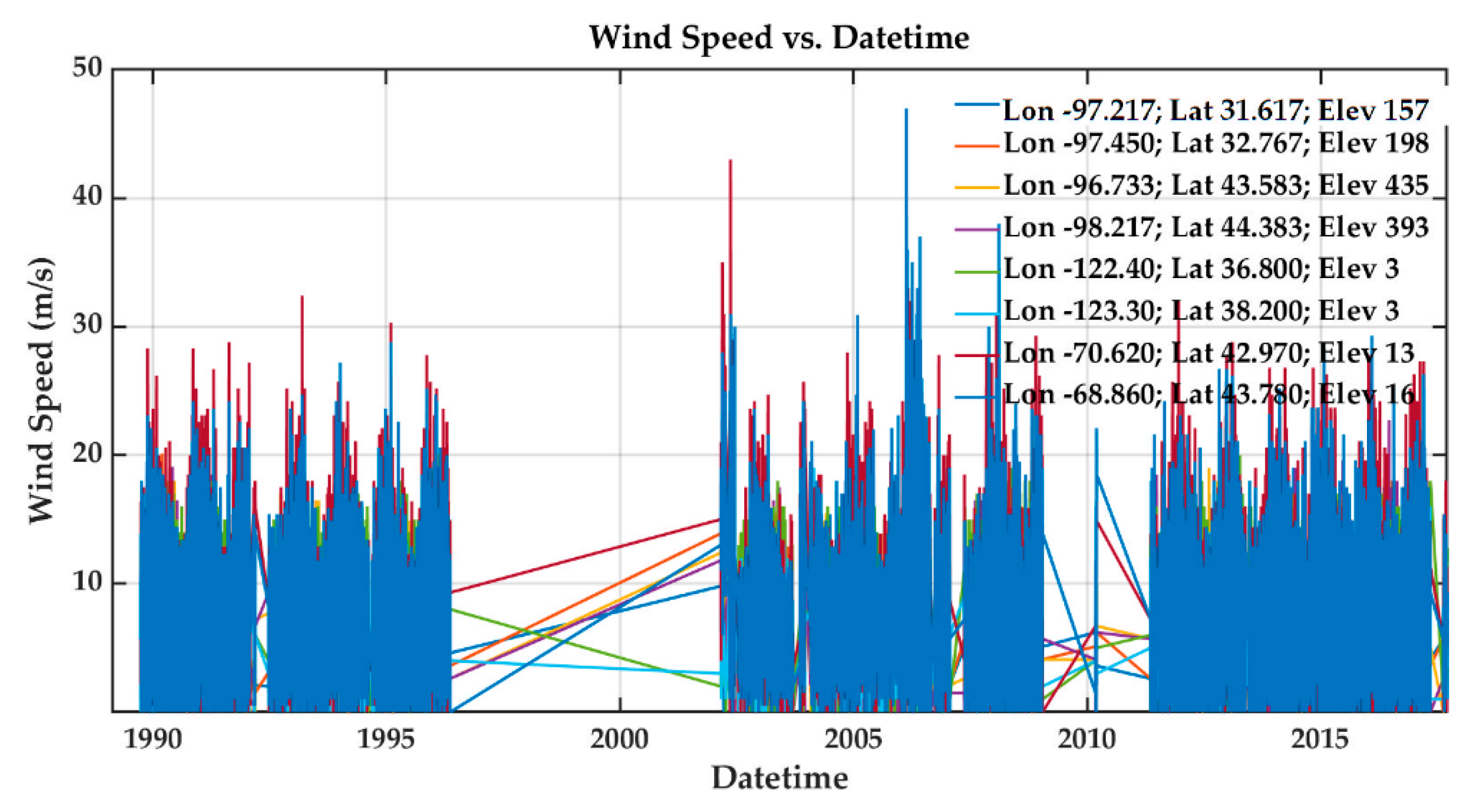
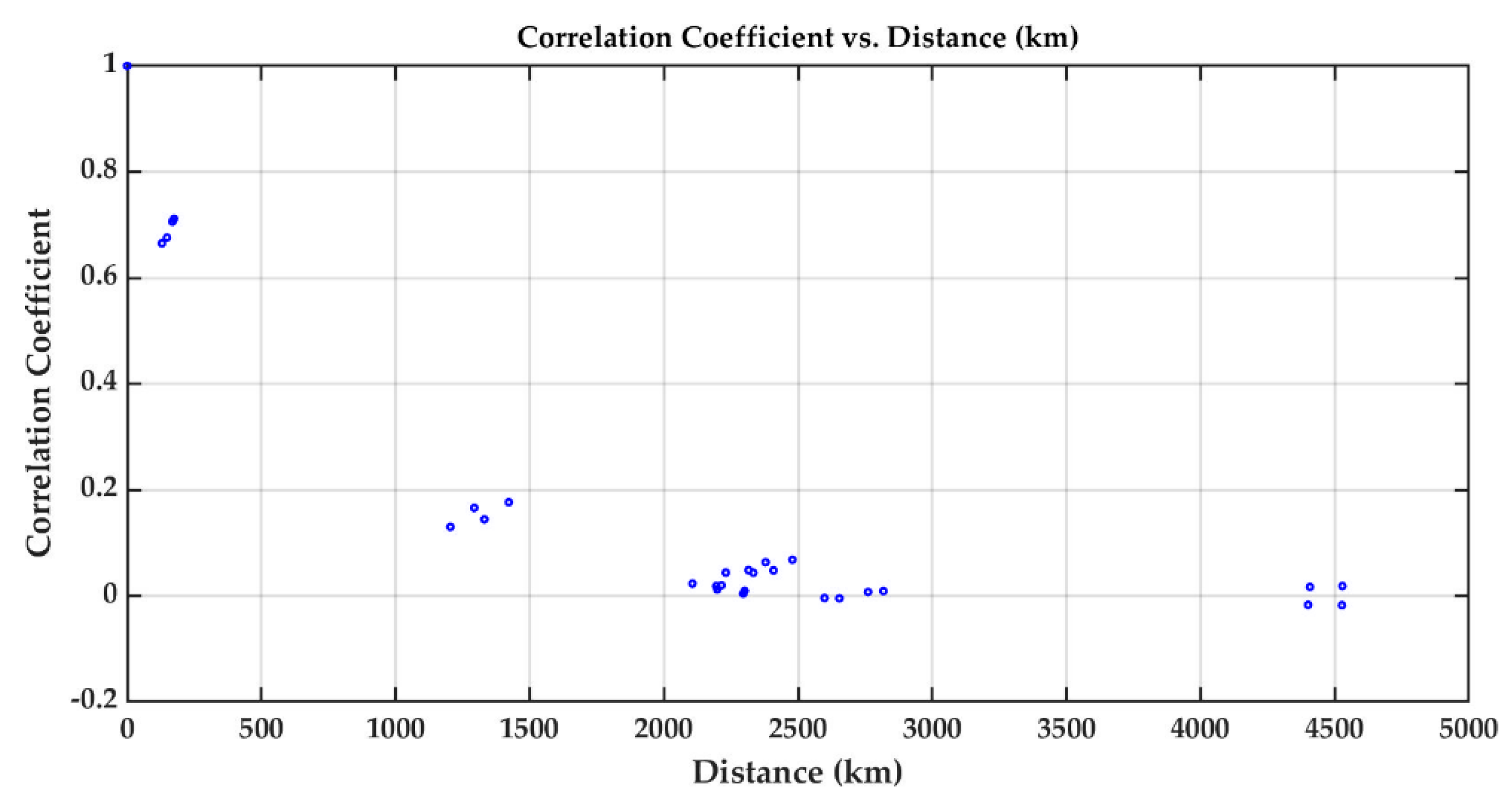
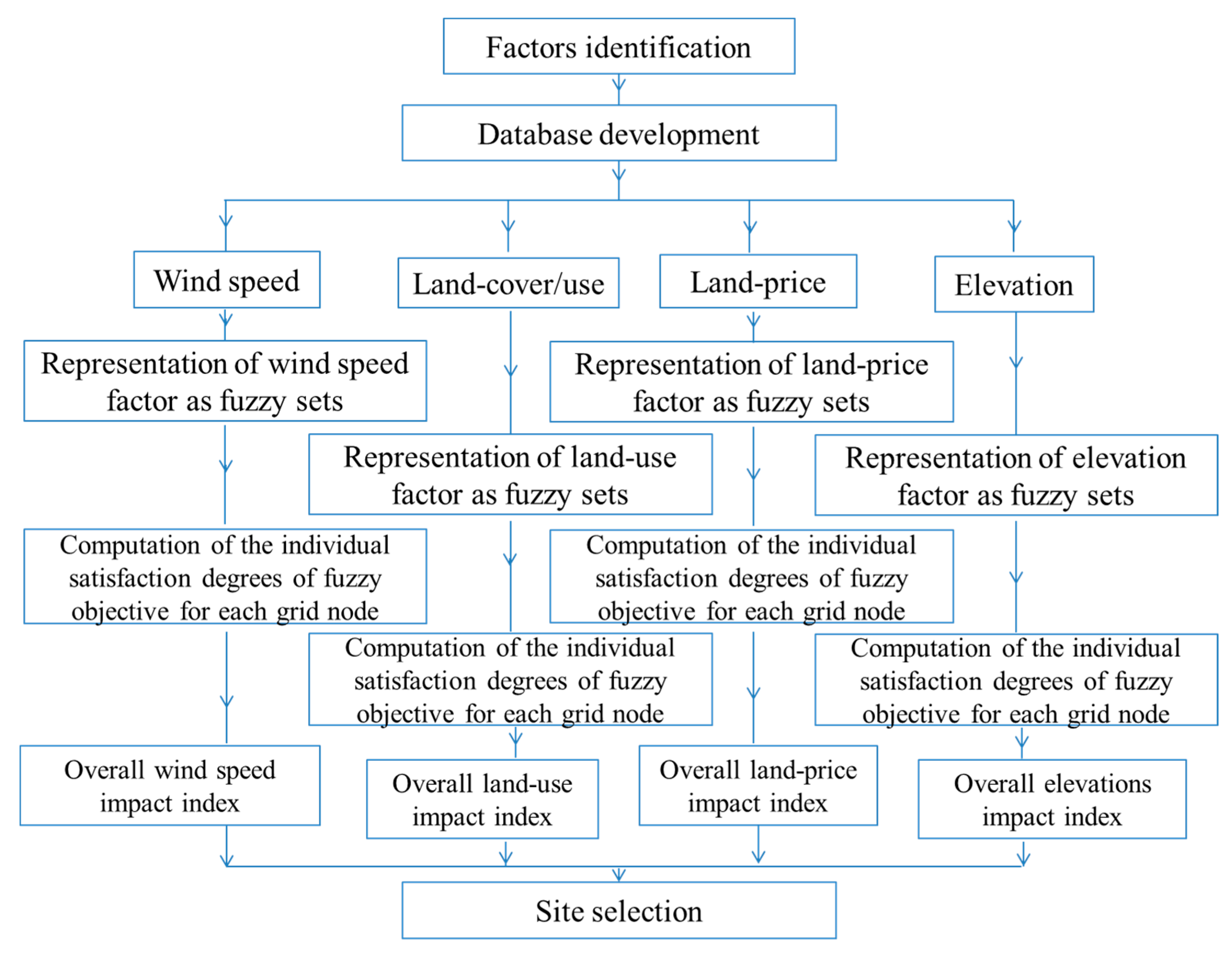
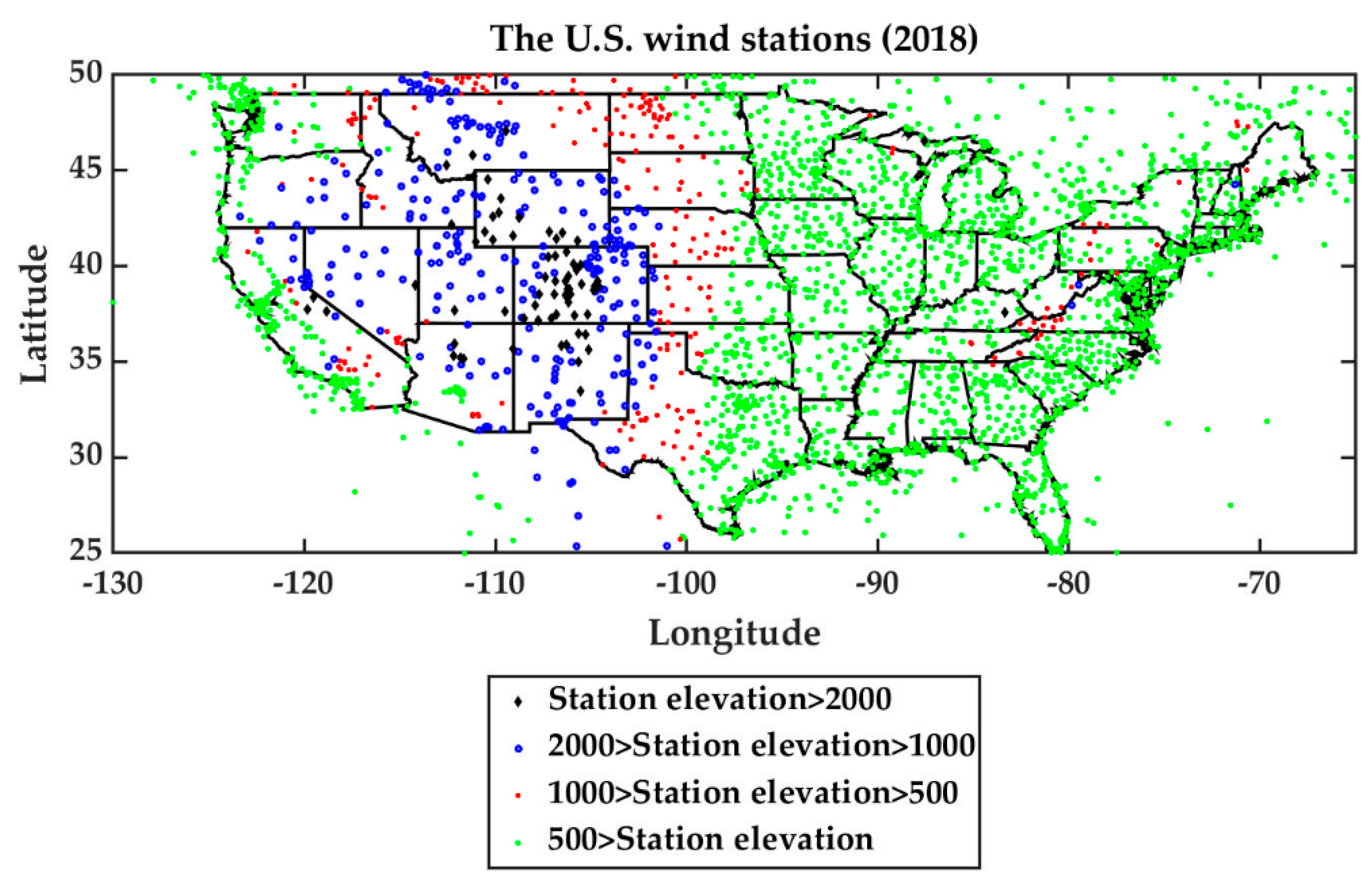
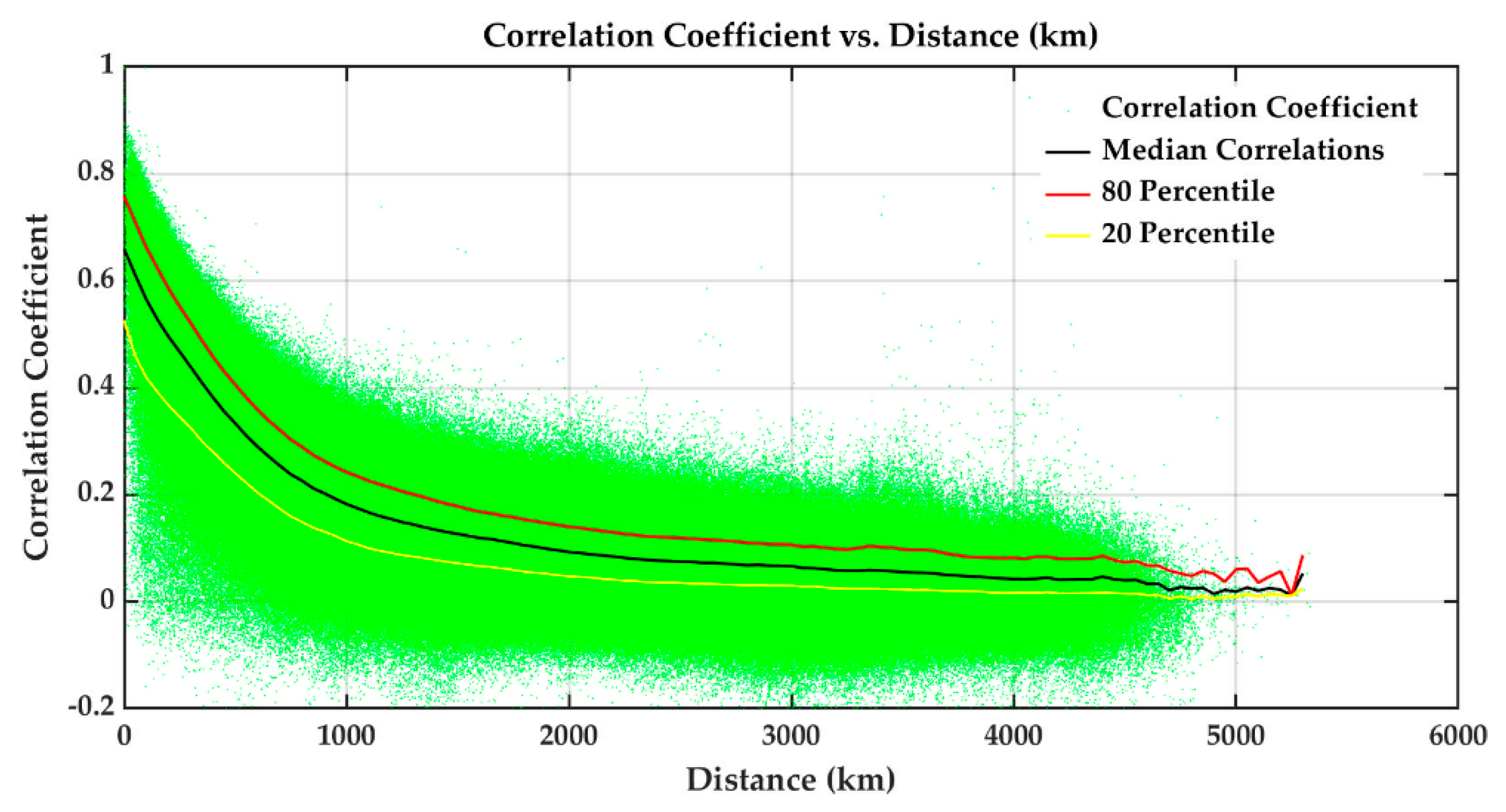
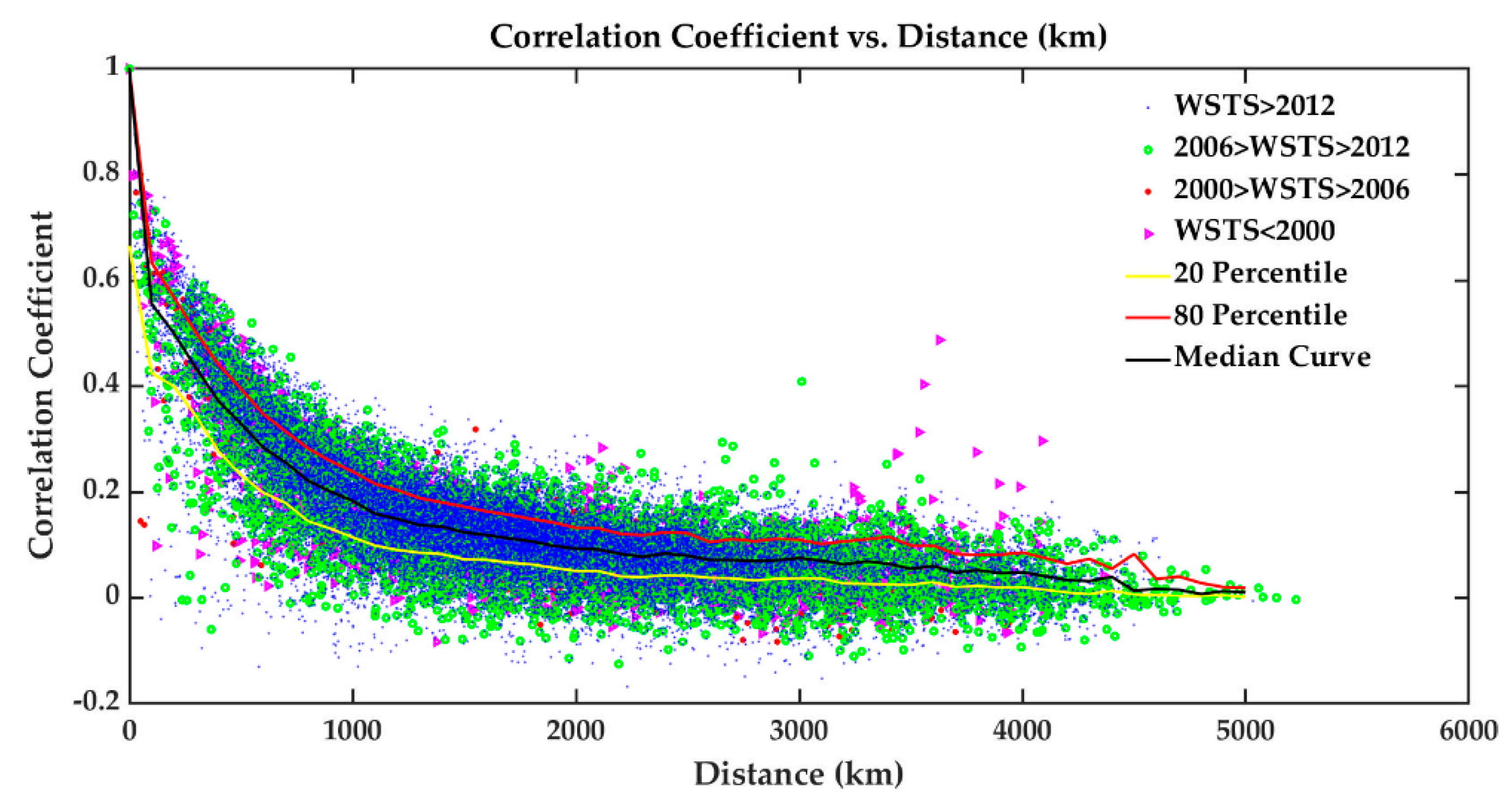
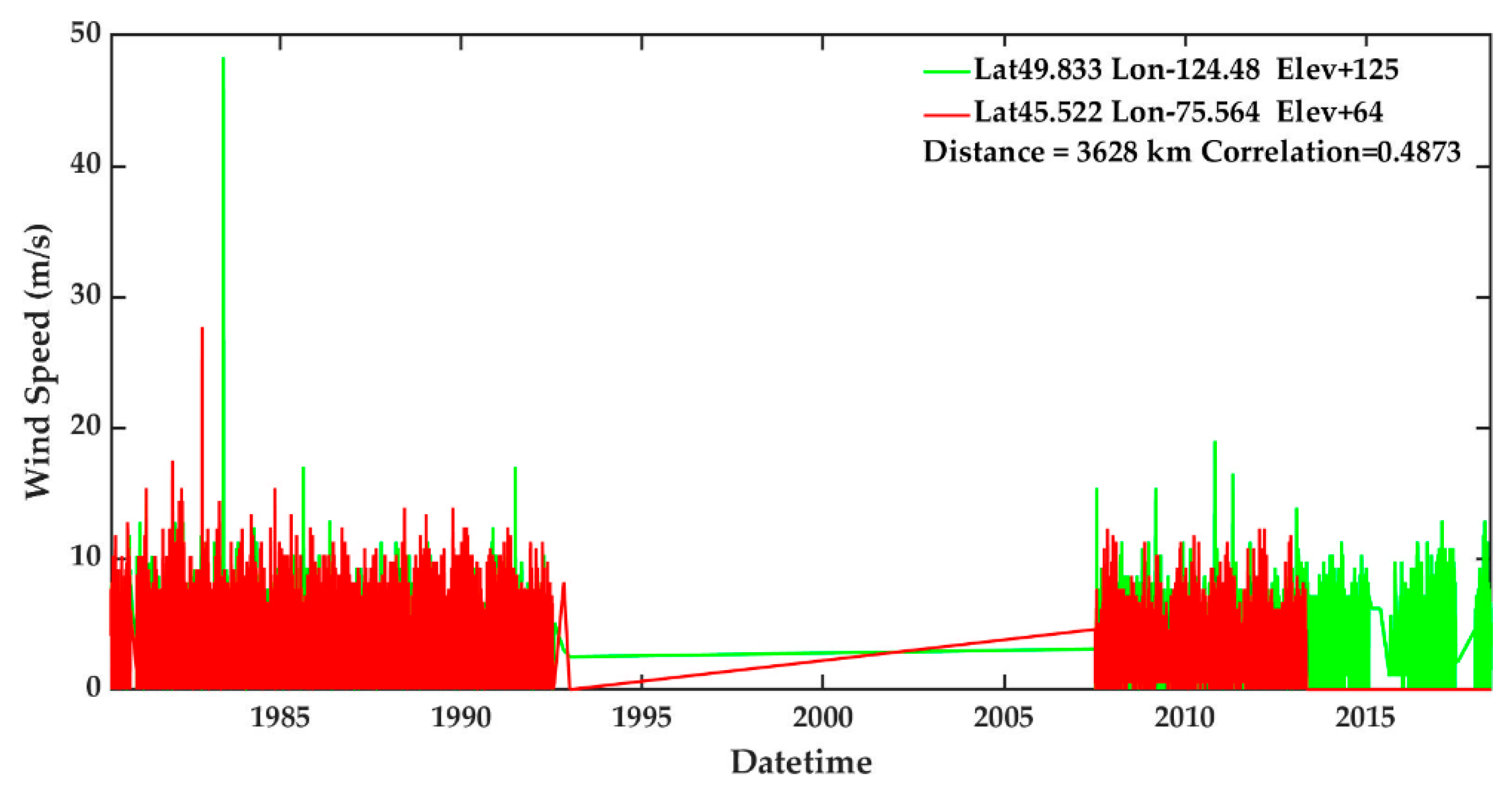
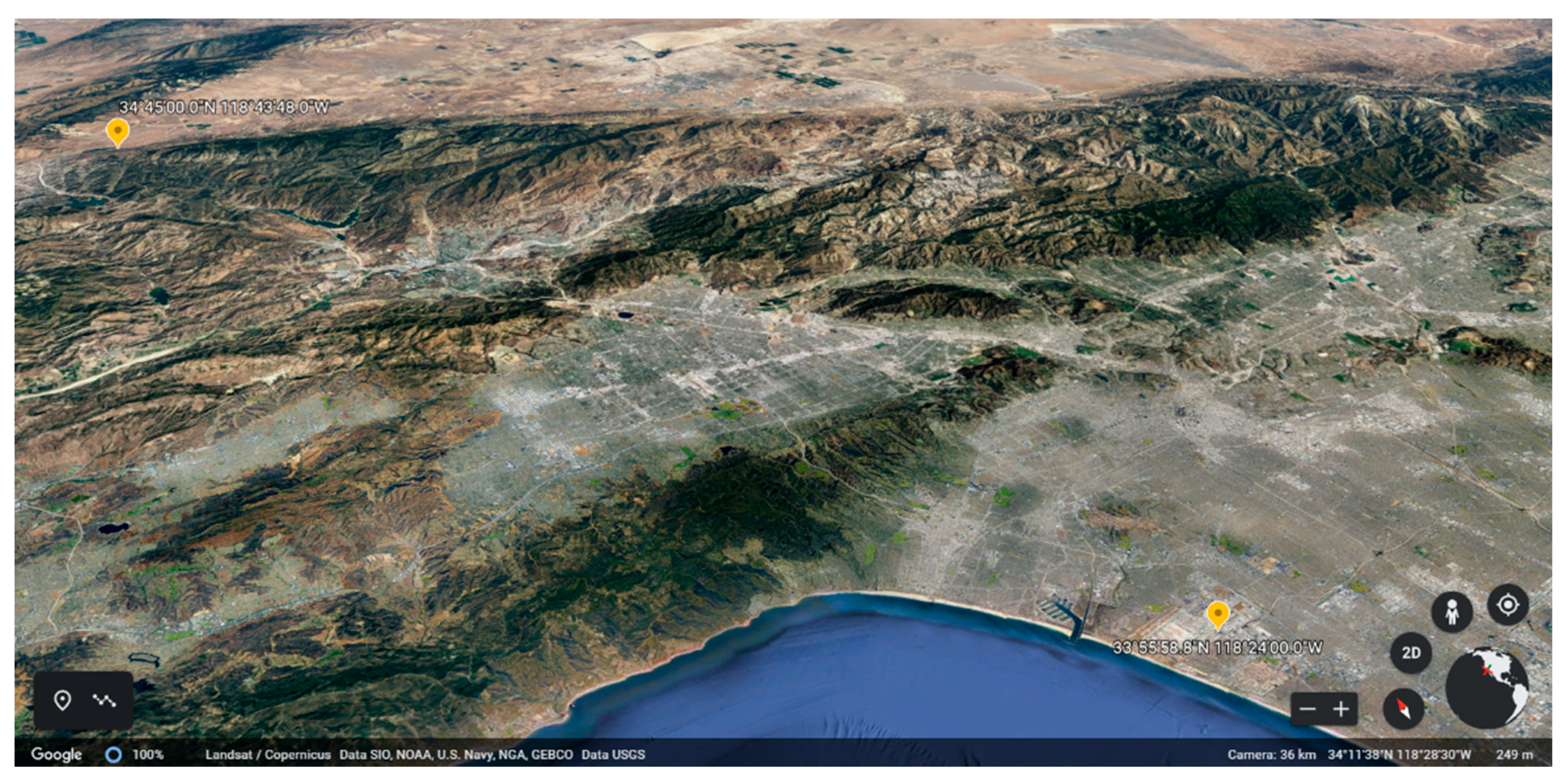
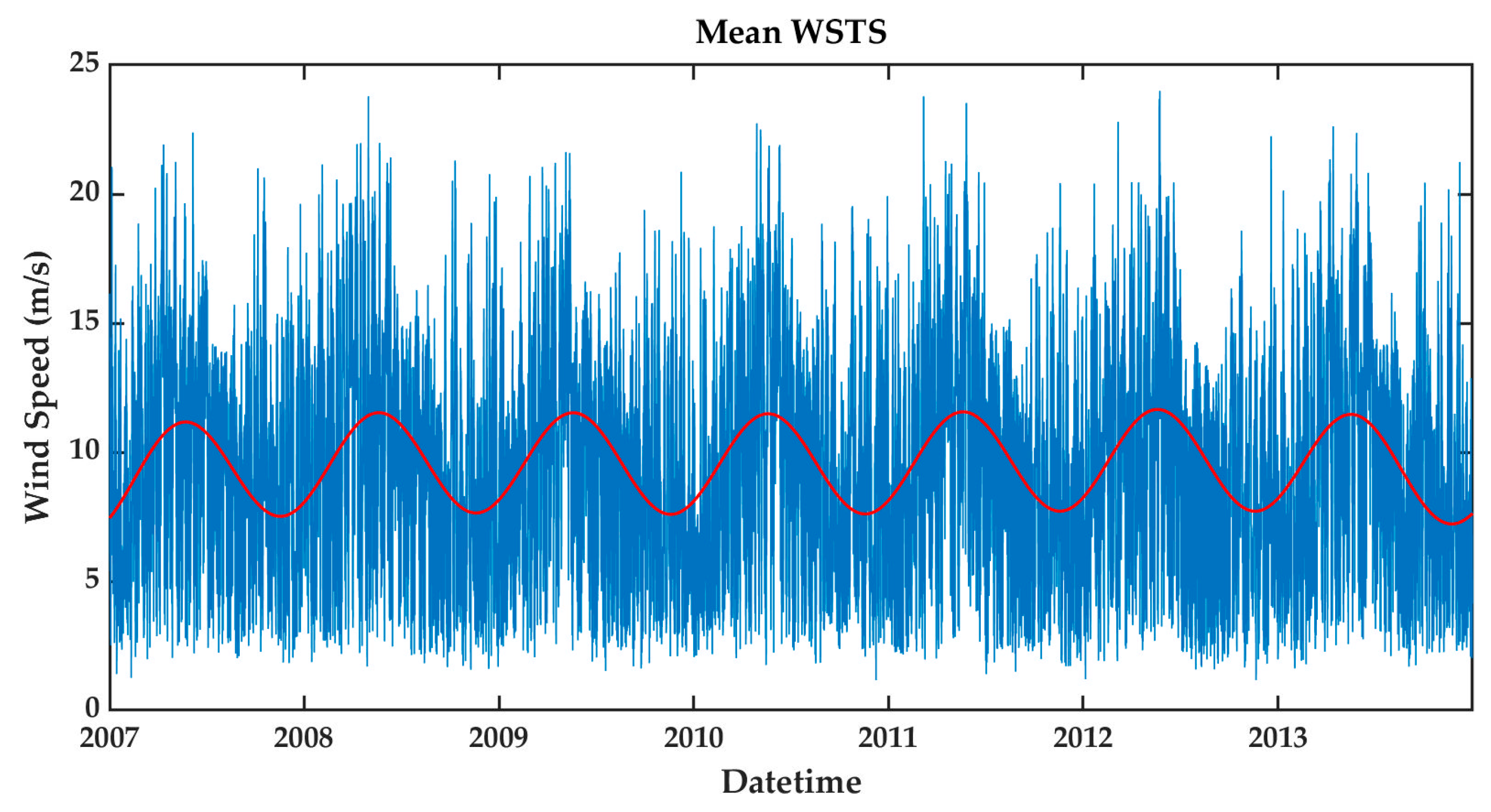



Publisher’s Note: MDPI stays neutral with regard to jurisdictional claims in published maps and institutional affiliations. |
© 2021 by the authors. Licensee MDPI, Basel, Switzerland. This article is an open access article distributed under the terms and conditions of the Creative Commons Attribution (CC BY) license (https://creativecommons.org/licenses/by/4.0/).
Share and Cite
Abdelmassih, G.; Al-Numay, M.; El Aroudi, A. Map Optimization Fuzzy Logic Framework in Wind Turbine Site Selection with Application to the USA Wind Farms. Energies 2021, 14, 6127. https://doi.org/10.3390/en14196127
Abdelmassih G, Al-Numay M, El Aroudi A. Map Optimization Fuzzy Logic Framework in Wind Turbine Site Selection with Application to the USA Wind Farms. Energies. 2021; 14(19):6127. https://doi.org/10.3390/en14196127
Chicago/Turabian StyleAbdelmassih, Gorg, Mohammed Al-Numay, and Abdelali El Aroudi. 2021. "Map Optimization Fuzzy Logic Framework in Wind Turbine Site Selection with Application to the USA Wind Farms" Energies 14, no. 19: 6127. https://doi.org/10.3390/en14196127
APA StyleAbdelmassih, G., Al-Numay, M., & El Aroudi, A. (2021). Map Optimization Fuzzy Logic Framework in Wind Turbine Site Selection with Application to the USA Wind Farms. Energies, 14(19), 6127. https://doi.org/10.3390/en14196127






